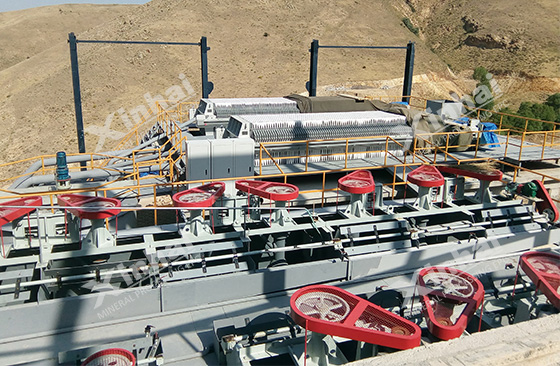The selection of equipment is closely related to ore property in the mineral processing plant. However, due to individual differences, there are significant differences in various equipment. Because the ore is different in the whole plant, different equipment is needed to process the ore. Therefore, mine owner must research copper ore property and type before determining copper ore dressing equipment. Taking Jingxi Dexing copper ore dressing project as an example, the deposit type of this project was porphyry copper, which can be divided into altered phyllite and altered granodiorite two types according to different ore properties, and it can be divided into veinlet and disseminated types according to different structures. There was a small amount of oxidized ore and mixed ore in the upper and periphery of the ore body. The raw ore include 0.5% copper, 2%sulfur, 0.01%molybdenum, gold content was up to 0.235g/t. Mineral compositions were much simple, useful minerals were mainly pyrite, chalcopyrite and molybdenite, followed by chalcocite, bornite and sphalerite, non-metallic minerals were quartz, sericite, chlorite, epidote and kaolin, etc.

From the above ore properties, this part of ore had smaller hardness and was easy to crush and grind, so slightly cheap equipment can be used in this process. However, its good grindability led to high mud content, which needs de-slime continuously, so more ore dressing equipment was needed to ensure desliming efficiency. The size distribution of pyrite was 0.003~ 0.4mm, coarse grain mostly. When the ore was grinded to 0.14 mm, monomer dissociation degree can reach more than 80%, but some minerals need fine grinding to achieve high monomer dissociation degree, and this ore belonged to uneven disseminated ore, fine grinding must be used to achieve good indicators. Therefore, desliming equipment was required in the copper ore dressing process.


 marketing@ytxinhai.com
marketing@ytxinhai.com  0086 13810327080
0086 13810327080 






































































































 CHAT
CHAT MESSAGE
MESSAGE

